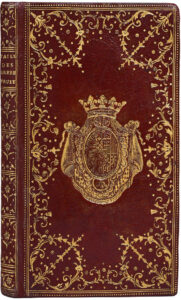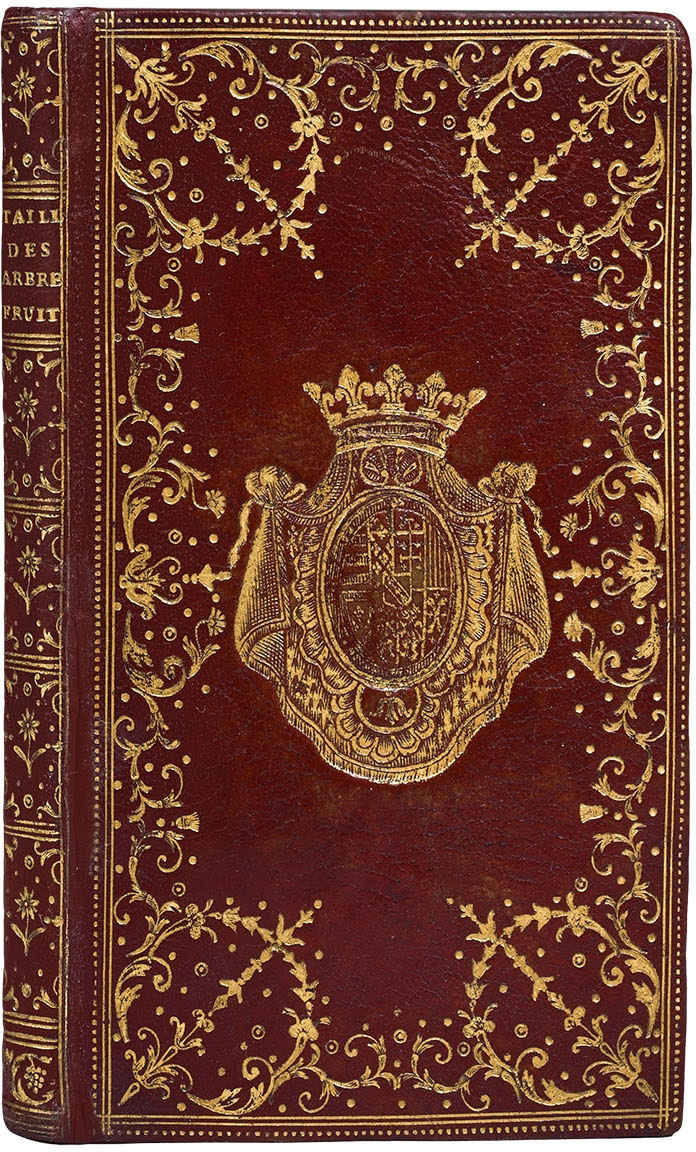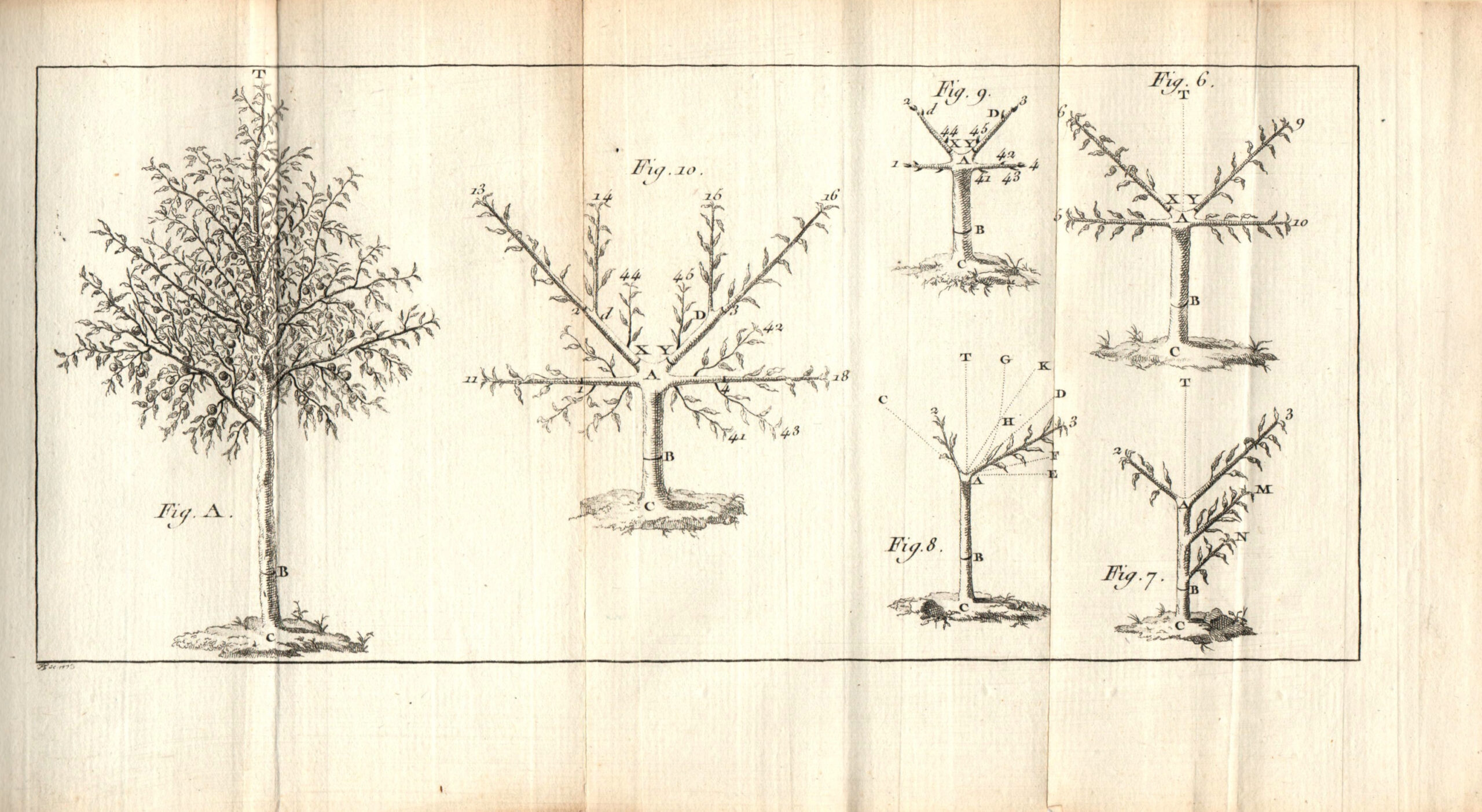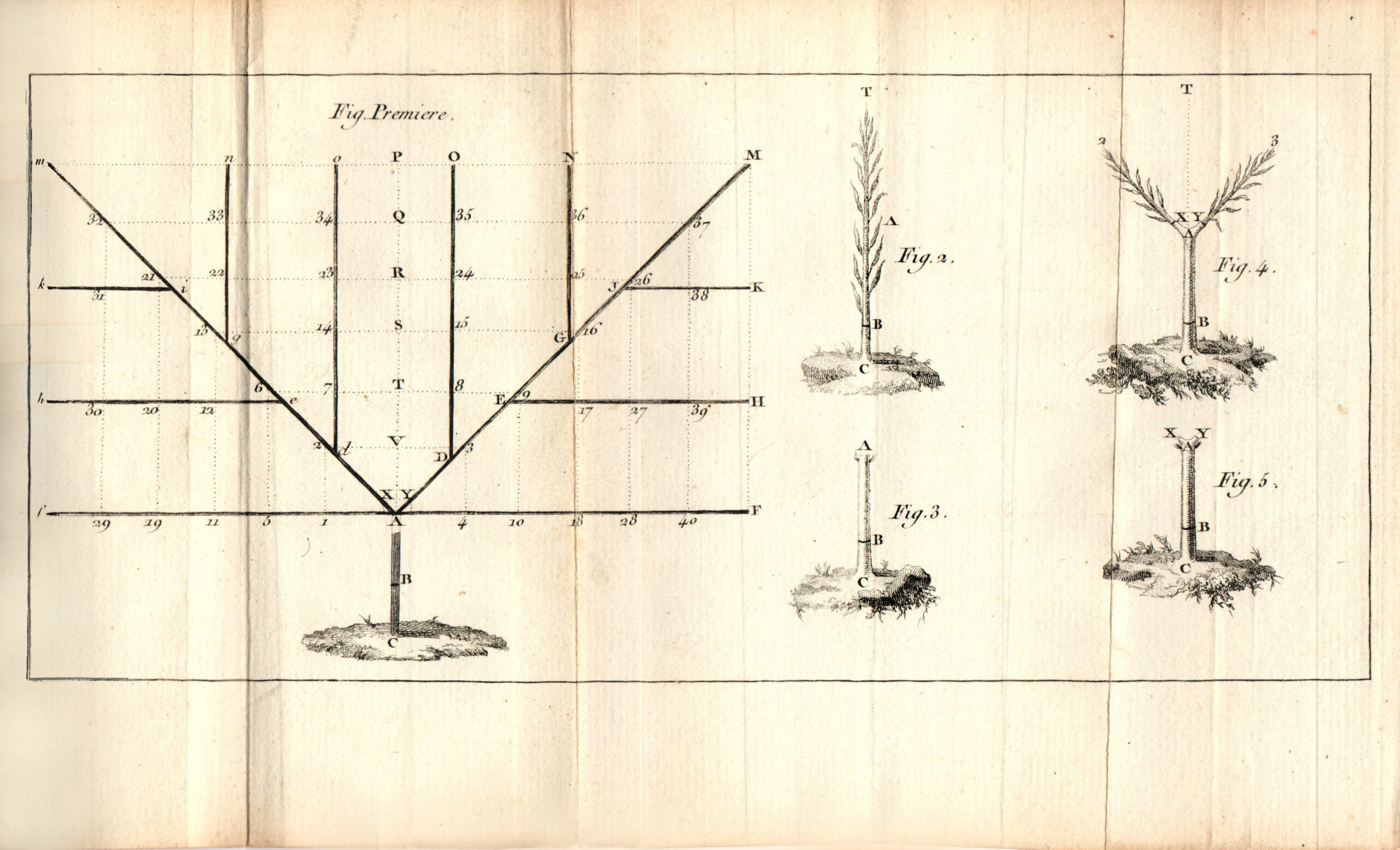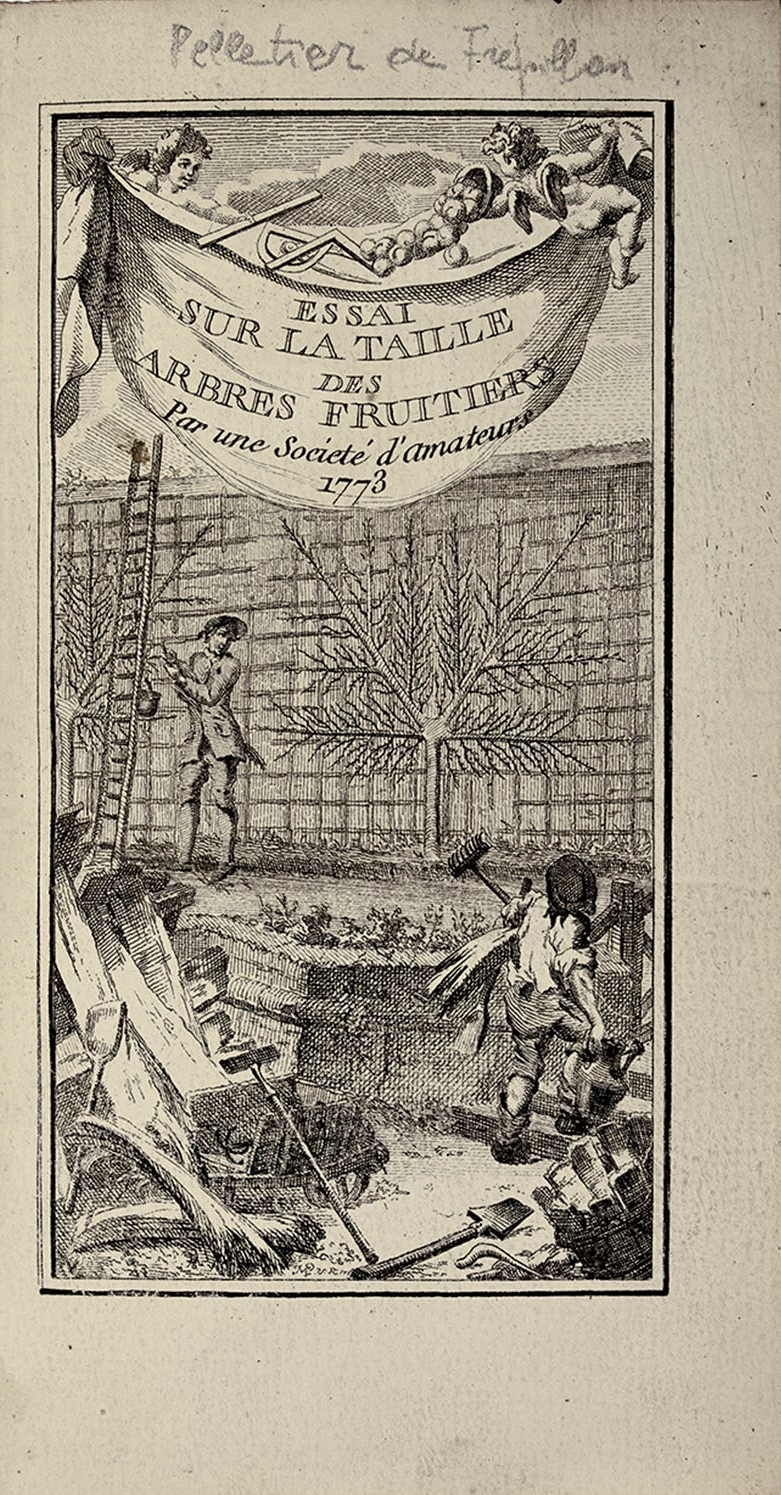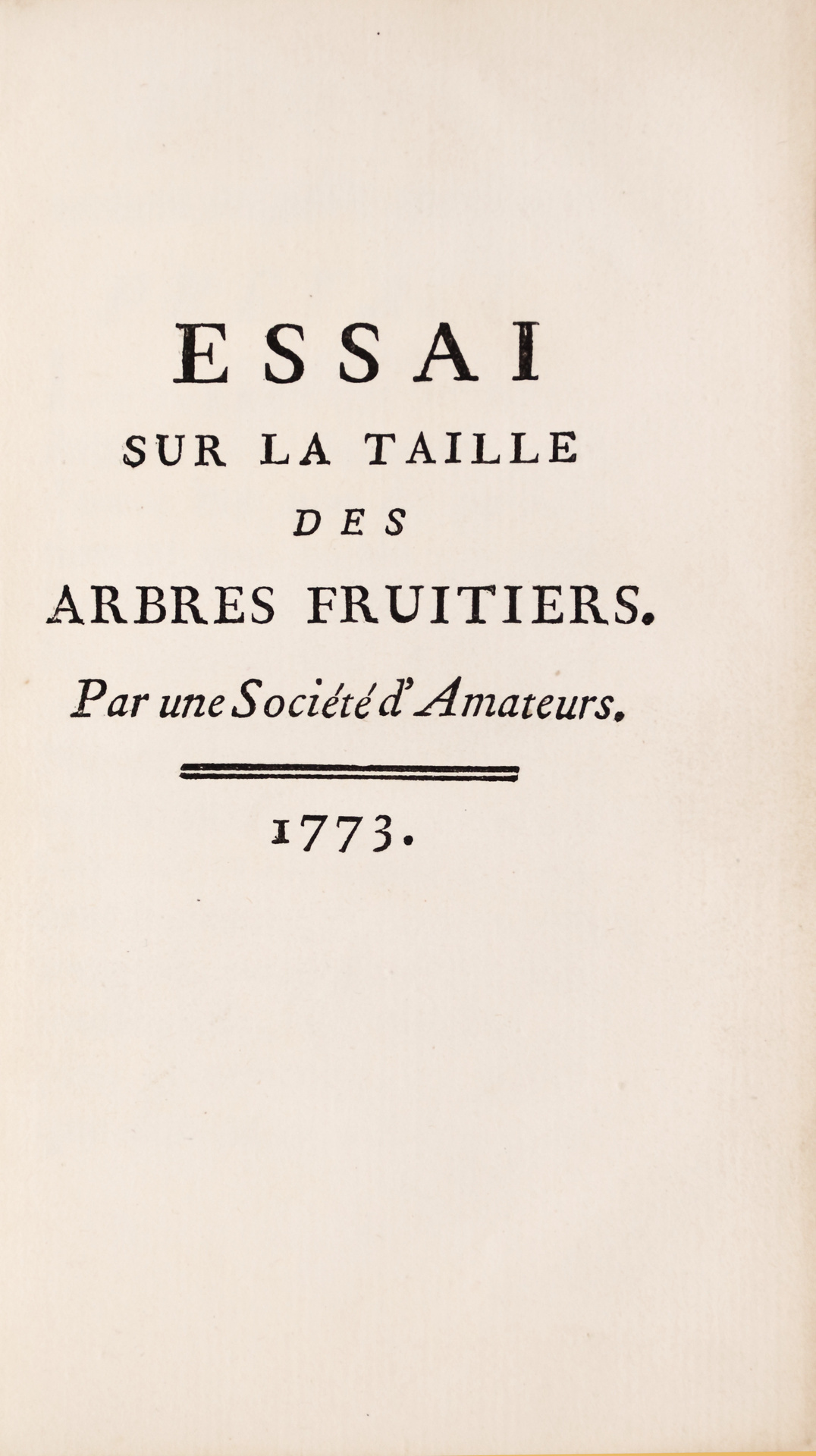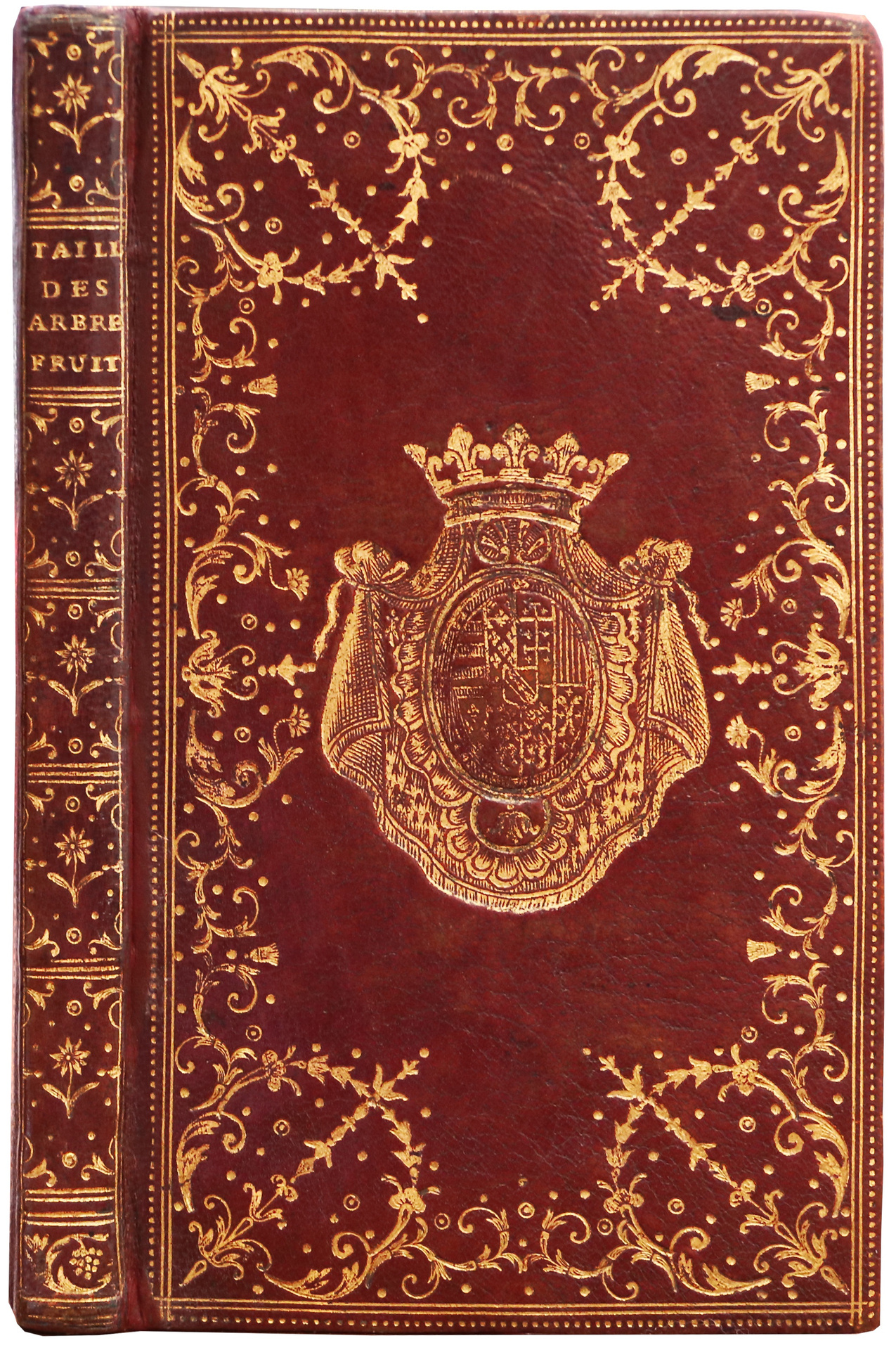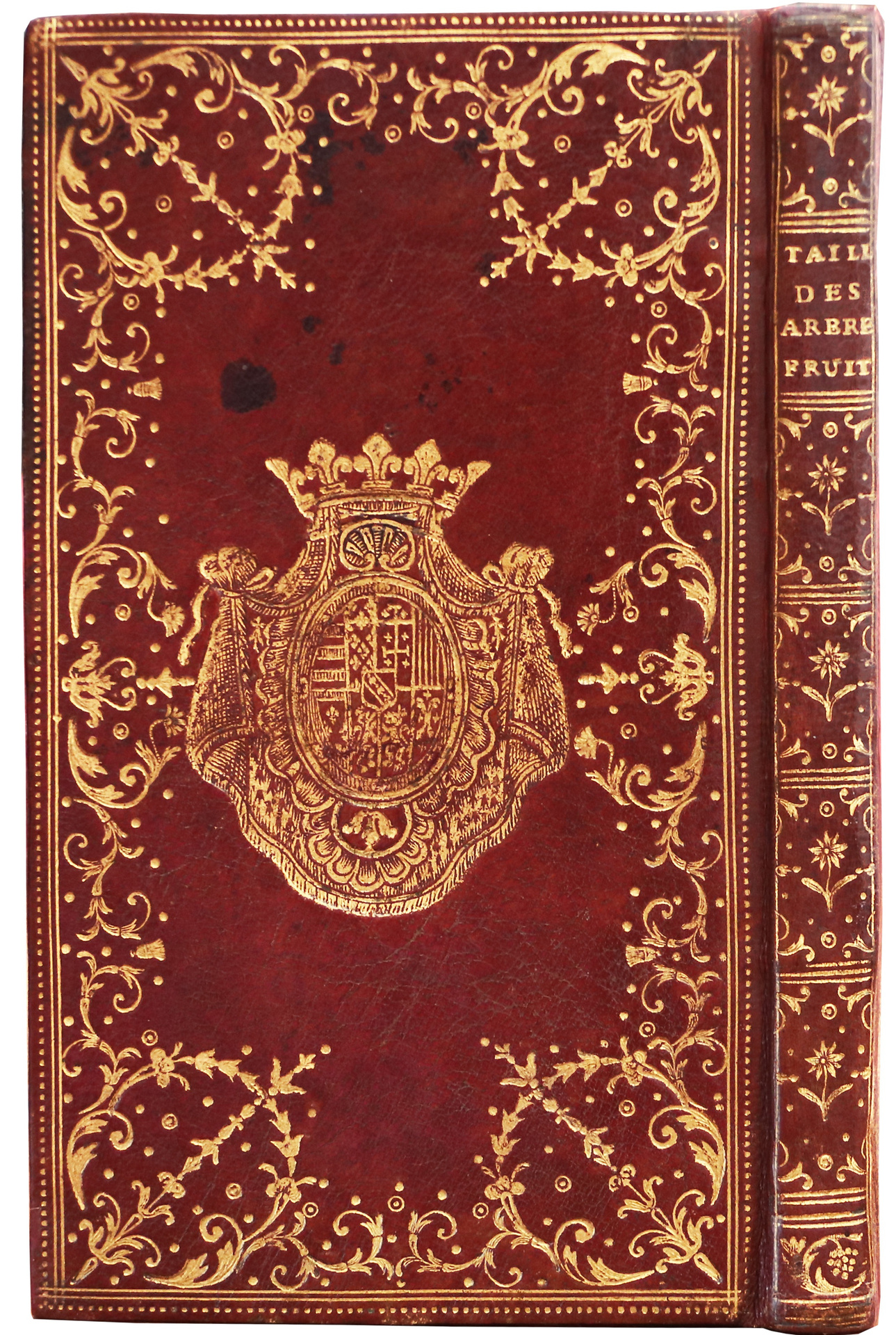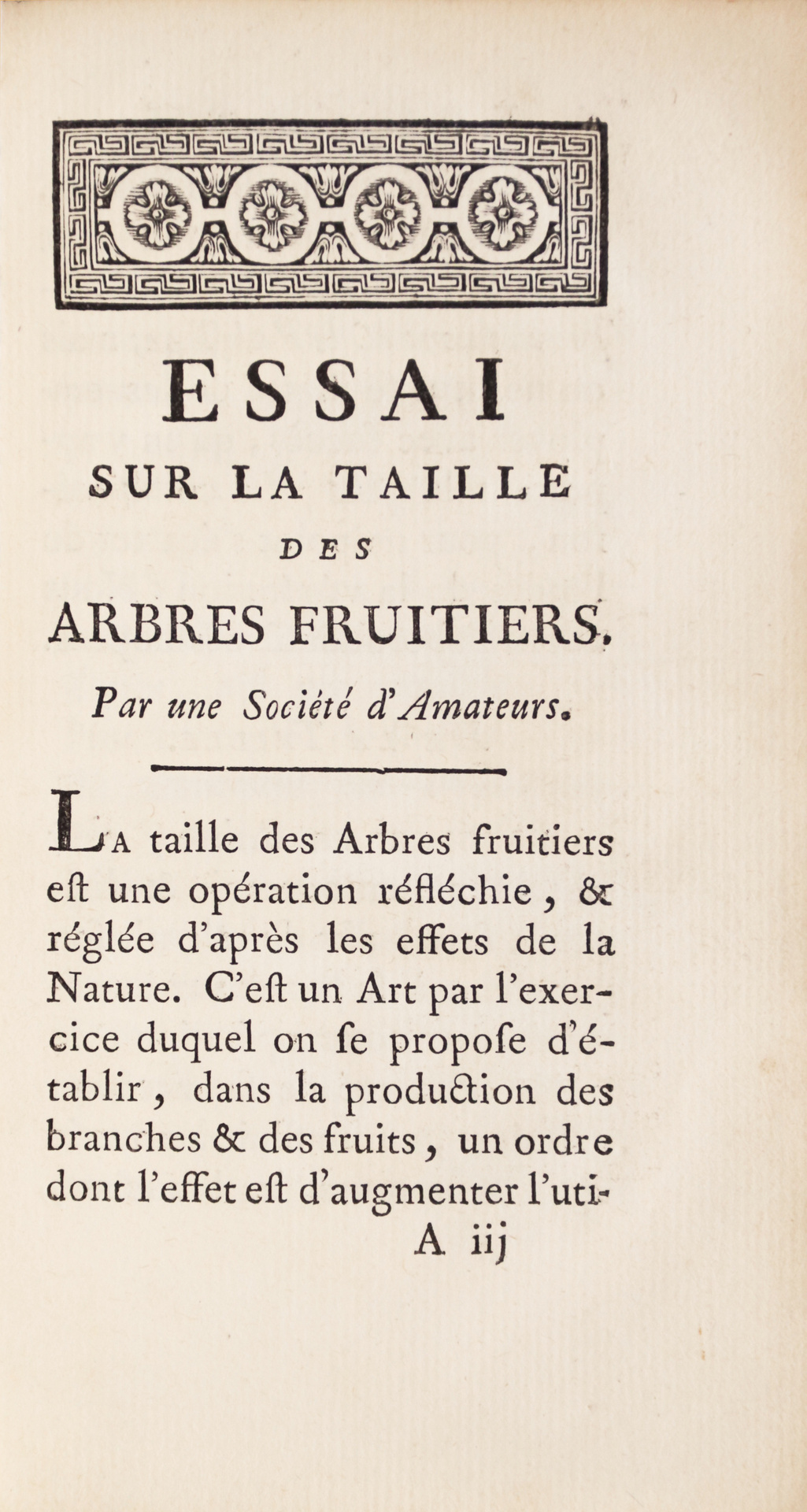Paris, L. F. Delatour, 1773.
8vo [165 x 94 mm] of 1 frontispiece, 60 pp., 5 folding plates out of pagination.
Red morocco, covers richly decorated with a large gilt dentelle, large gilt arms in the center, flat spine decorated with gilt fleurons, inner gilt border, blue moiré paper doublure, gilt edges. Contemporary binding.
First edition of this treatise dedicated to the art of pruning fruit trees.
Barbier, II, 246; Janson, 398; Conlon 73: 1120; unknown to Nissen and Pritzel.
This interesting manual describes the method developed by Pelletier de Frépillon for pruning fruit trees based on geometric rules.
“Etienne Pelletier De Frepillon is probably farmer or lord censier of Frépillon, under the leadership of the Abbess of Maubuisson. Fourier of the court until 1773 (or 1775), he retired permanently to Frépillon, where he probably, during his free time, or with the help of a gardener, experimented in his garden a new method for pruning fruit trees, especially peach trees.
The first researches of Le Pelletier seem to meet some success”.
In 1843, the Academic Society of Agriculture of Aube emitted a rather close opinion:
“(This) small treatise, in 12mo format,… is rather valued. The best principles are taught in it. It is very short and very clear. It often refers to the espalier peach tree. But the author seemed then, and for a long time, to have insisted too much on certain form, the square form to give to trees. One didn’t consider this form as having to contribute much, or as much as those previously adopted, to their product, or even more than to their preservation.”
The illustration of the highest interest consists of an engraved frontispiece and 5 folding plates presenting the pruning method proposed by the author.
Precious copy contemporary bound in red morocco with the arms of Charles-Alexandre de Lorraine (1712-1780).
Charles-Alexandre de Lorraine (1712 – 1780) was Governor General of the Austrian Netherlands (1741-1780), Grand Master of the Teutonic Order (1761-1780) and Knight of the Order of the Golden Fleece.
He was the twelfth child of Leopold I, Duke of Lorraine and Bar, and Elisabeth Charlotte of Orleans. He was also the brother-in-law of the empress Maria Teresa. He was made Marshal of Austria in 1740. In April 1741, he was designated as the successor in the Netherlands of the Governess general, Archduchess Marie-Elisabeth.
During the War of Austrian Succession, he was one of Austria’s leading commanders. He entered Brussels, along with his wife, the Archduchess Marie-Anne of Austria, on March 26 of this same year. Two months later, he took command of the Rhine armies, leaving his wife alone in the Netherlands. After the death of the latter in childbirth in December 1774, the French invasion, then occupation (1745-1748) prevented his return to the Netherlands. It was not until April 24, 1749 that he was able to really begin his governorship.
He was certainly the most popular of the general governors of the Austrian Netherlands. As a testimony to this, a statue with his effigy was erected in 1775 in Brussels on the brand new place of Lorraine, renamed since then place Royale. Without betraying the interests of the imperial crown, he succeeded in defending those of the Netherlands, and in enforcing their privileges. He simultaneously encouraged the progress of the Enlightenment and the economic development, patronizing companies such as the creation of the Teresian Academy of Brussels (1772), the execution by Count Josef de Ferraris of a very precise map of the territory (1770-1778), or various technical and industrial experiments in his castle of Tervuren.
